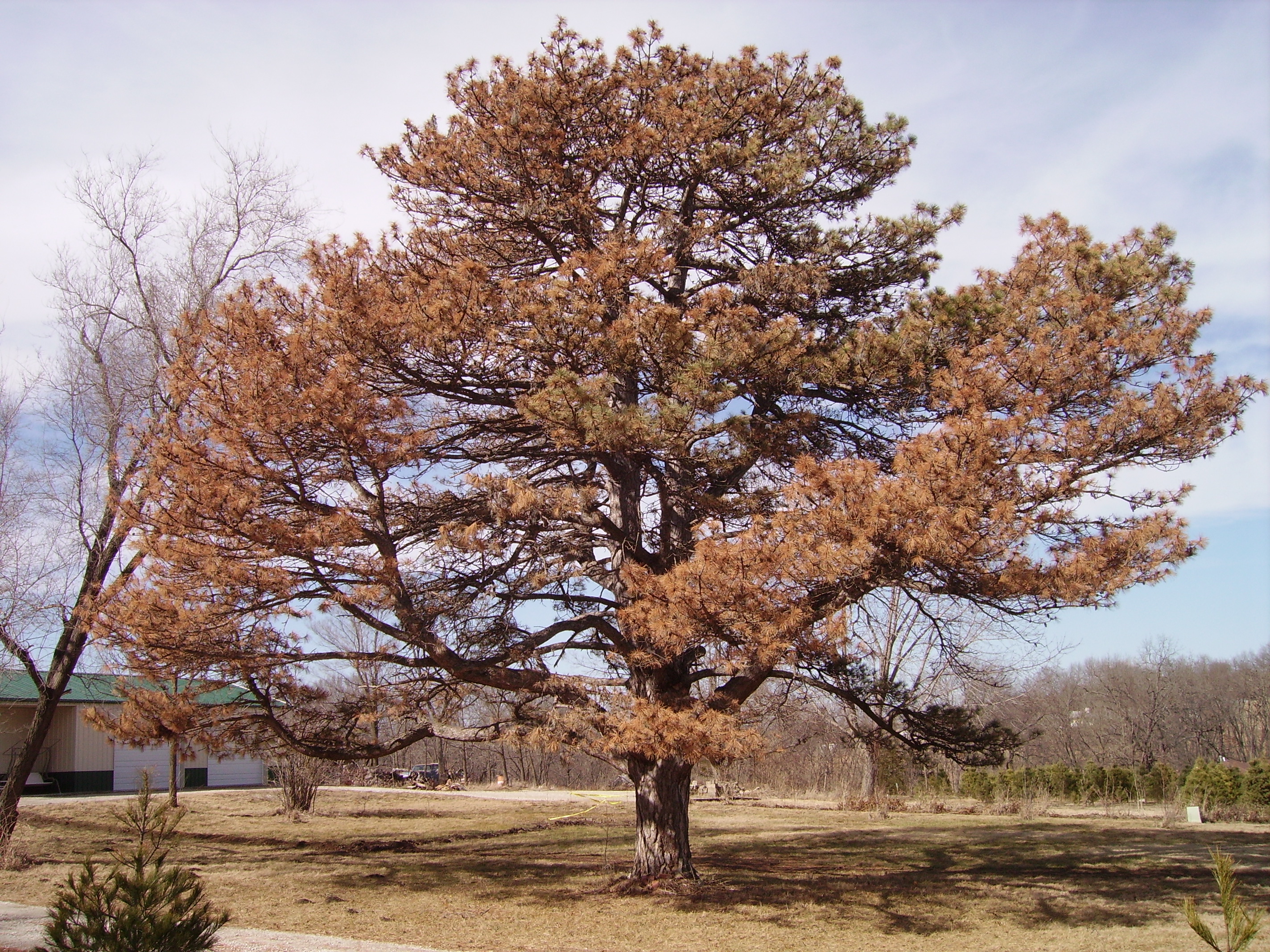Pine Wilt
 The disease pine wilt is caused by the pinewood nematode, Bursaphelenchus xylophilus, but unlike its counterparts is transmitted from tree to tree by an insect vector, the pine sawyer beetle, Monochamus carolinensis (a long-horn beetle). In Japan, pine wilt has caused severe mortality in the red and black pine forests. This disease occurs in the U.S. east of the Rocky Mountains, where known hosts grow. It was discovered in southeast Kansas in 1979. It is very common in the eastern half of the state and is slowly spreading westward.
The disease pine wilt is caused by the pinewood nematode, Bursaphelenchus xylophilus, but unlike its counterparts is transmitted from tree to tree by an insect vector, the pine sawyer beetle, Monochamus carolinensis (a long-horn beetle). In Japan, pine wilt has caused severe mortality in the red and black pine forests. This disease occurs in the U.S. east of the Rocky Mountains, where known hosts grow. It was discovered in southeast Kansas in 1979. It is very common in the eastern half of the state and is slowly spreading westward.
How does Pine wilt kill my tree?
The most susceptible trees are Scots/Scotch pines, followed by Austrian pines, then mugo and white pines. Tree death is caused by the reproduction and feeding of the nematodes within the resin canals of the tree stopping the flow of resin in the tree. This can occur within a few weeks to months. Both the beetles and the nematodes overwinter in the tree and when spring comes around, the 1st of May (weather dependent) is usually when the new beetles emerge carrying the nematodes and begin to infect new trees.
What are the Signs/Symptoms of Pine wilt?
New infections are most visible August through December and can been seen from branch to branch or over the entire tree. The needles will turn greyish green and then yellow and brown. These dead needles can reside on the tree up to a year. In addition to the look of the tree, the branches will be brittle due to the lack of resin.
What Kansans can do to Control Pine wilt in our state
New introductions of the disease should be eradicated through timely sanitation. Trees infected in the fall need to be cut down and destroyed by chipping or burning immediately – no later than April 1st. If the weather patterns for that year are warmer than usual then this process may need to occur a month in advance. Do not pile or transport cut logs of infested trees, beetles can still emerge.
Preventative Measures
The best way to prevent pine wilt is to keep your trees healthy and vigorous by watering during dry spells. The beetles are attracted to stress trees. There are also preventative trunk injections that can be used to protect high value trees, but this does not provide a cure for the disease nor prevent your tree 100% from ever getting the disease. These injections are costly and only decrease the chances of infection. Contact your district forester or a certified arborist for more information.
In addition, avoid planting Scots/Scotch pines. They are very susceptible to the disease. Contact your local district forester for suggestions on alternative species for your plantings.
If you believe your tree has pine wilt, call your local district forester or extension agent and if suggested submit a branch sample to the K-State Plant Disease Diagnostic Lab. There is a small fee for testing. To contact the Plant Disease Diagnostic Lab, 4032 Throckmorton Hall, Kansas State University, Manhattan, KS 66506. 785-532-1330.